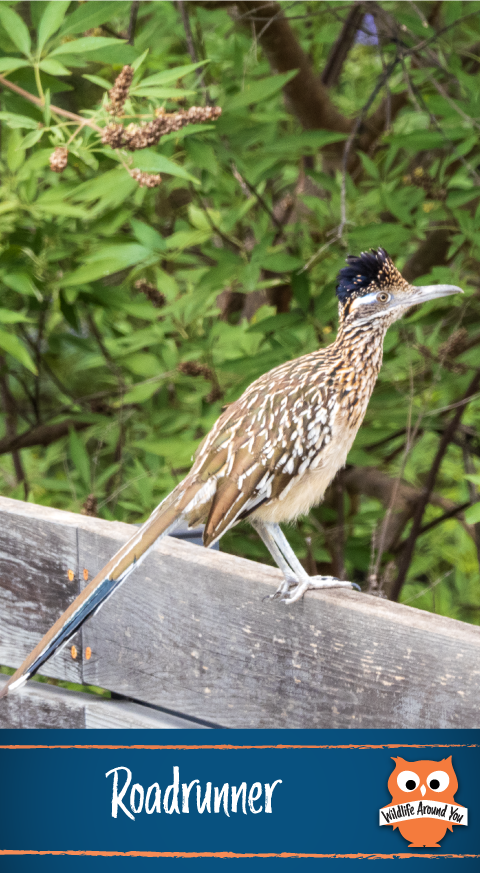Identification:
- The roadrunner is a long-tailed bird that is tan or brown.
- It has brown and white feathers, a long, pointed beak, and a distinctive crest of feathers on its head.
- Adult roadrunners are about 20-24 inches long and weigh about 8-15 ounces.
Habitat:
- Roadrunners are found in arid and semi-arid regions of the southwestern United States, Mexico, and parts of Central America.
- They live in a variety of habitats, including deserts, grasslands, and scrubland.
- They are typically found at low elevations, but can occasionally be found at higher elevations as well.
Behavior:
- Roadrunners are primarily ground-dwelling birds that are capable of running at speeds up to 20 miles per hour.
- They are diurnal and are most active in the morning and late afternoon.
- Roadrunners are known for their ability to kill and eat rattlesnakes, which they stun with quick strikes of their beak.
- They are also known for their distinctive “coyote” call, which sounds like a series of rapid, low-pitched barks. They will also “coo” and click their beaks.
Home Building:
- The pair chooses a nest site 3–10 feet or more off the ground, on a horizontal branch or in the crotch of a sturdy bush, cactus, or small tree.
- They are known for using a variety of materials to decorate their nest, including feathers, leaves, and even snake skins.
Offspring:
- Roadrunners mate for life and typically have one brood per year.
- The female will lay 2-6 eggs in a simple scrape in the ground or an abandoned nest.
- Both parents will incubate the eggs for the 20 day period and care for the chicks once they hatch.
- Chicks are born with a full set of feathers and are able to leave the nest within 2-3 weeks.
Diet:
- Roadrunners are omnivores and have a varied diet that includes insects, lizards, snakes, rodents, and small birds.
- Roadrunners can also kill and eat rattlesnakes, often in tandem with another roadrunner: as one distracts the snake by jumping and flapping, the other sneaks up and pins its head, then bashes the snake against a rock. If it’s is too long to swallow all at once, a roadrunner will walk around with a length of snake still protruding from its bill, swallowing it a little at a time as the snake digests.
- They are also known to eat fruit and seeds, particularly during the winter when other food sources are scarce.
- The primarily get their fluids from the food they eat. To stay hydrated they rid themselves of the excess salt found in protein-rich food through salt glands near their eyes. This is part of how they’re able to survive in the desert.
Predators:
- Roadrunners have relatively few natural predators, but may be preyed upon by coyotes, hawks, and owls.
Fun Facts:
- The roadrunner is the state bird of New Mexico.
- Roadrunners are known for their unusual habit of sunbathing, in which they will lie on their back with their wings outstretched to warm themselves in the sun.
- Roadrunners have a distinctive, long stride that allows them to cover a lot of ground quickly. Despite the cartoons, roadrunners are quite a bit slower than coyotes, about half their speed.
- Despite their name, roadrunners are not true runners and are capable of sustained flight over short distances.
- They have 4 toes, two pointing forwards and 2 backwards which forms an “x” like track.
- To conserve energy they can lower their body temperature by as much as 15 degrees to help survive cold desert nights.

